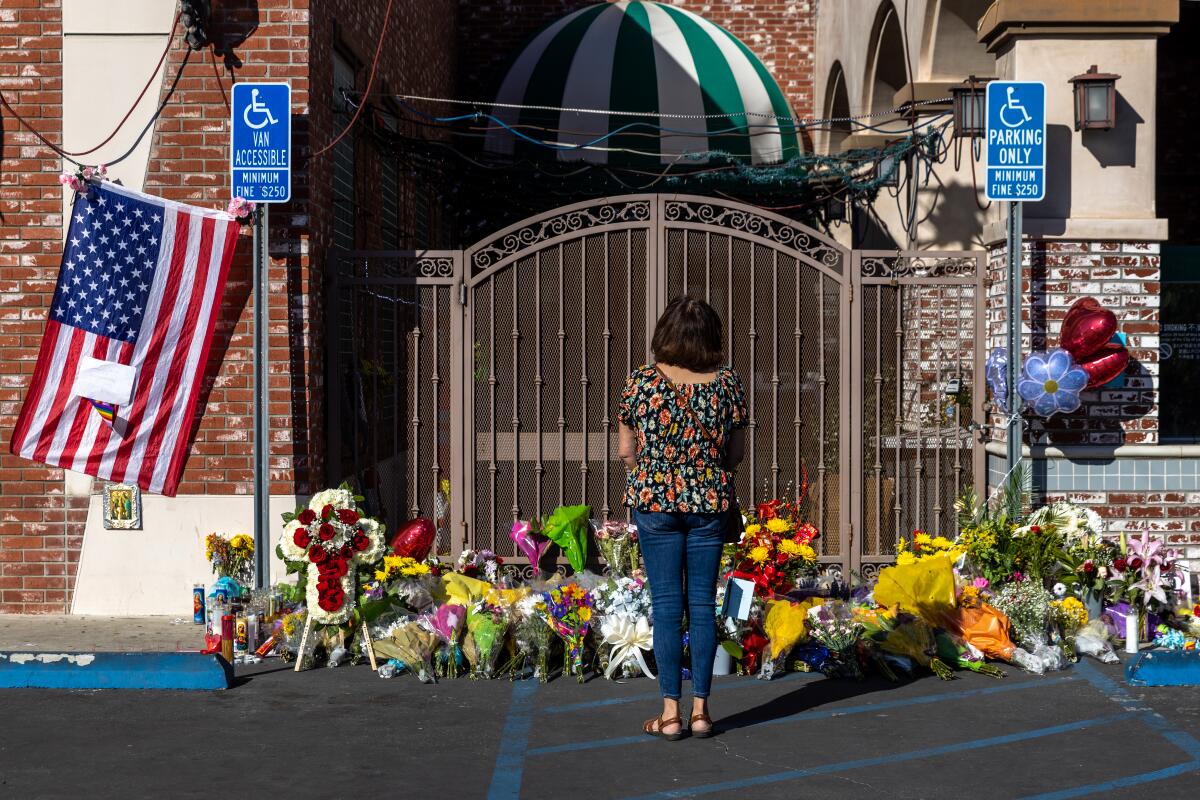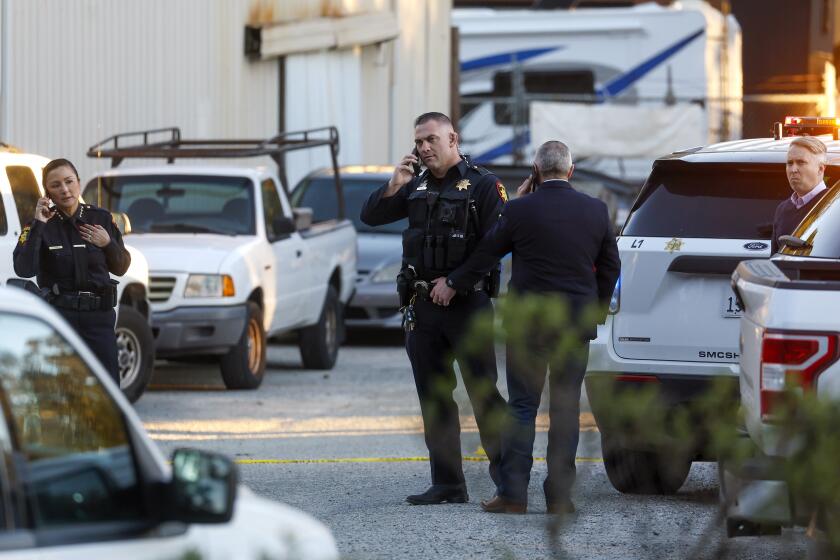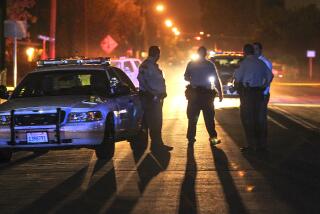Column: I covered the California McDonald’s massacre in 1984. Why does gun violence just get worse?

- Share via
On a sunny July afternoon, James Oliver Huberty drove his black Mercury Marquis to a McDonald’s restaurant in San Ysidro, near the border with Mexico, bearing a small arsenal and hundreds of rounds of ammunition.
He opened fire on cooks and counter workers, on diners and employees hiding in a storage area, on a mother and her infant, on three boys bicycling through the parking lot.
Twenty-one people died in what, at the time, was the worst mass shooting by a lone gunman in U.S. history. I covered the murders for United Press International. Today, the 1984 San Ysidro McDonald’s massacre, as it’s come to be known, barely makes the Top 10.
In the sanguinary years since, there have been more than 130 mass shootings, according to a database kept by the news site Mother Jones that counts incidents in which four or more people were killed.
Those are decades in which the nation’s gun laws have generally grown more permissive, weapons more readily available and lawmakers in Washington notably less responsive to the majority of Americans who favor stricter safety regulations, such as a ban on assault-type weapons and high-capacity magazines.
It’s hardly a coincidence.
Three mass shootings have been carried out in one week in California, in Goshen, Monterey Park and Half Moon Bay.
There have been mass shootings at military bases and gay nightclubs, churches and restaurants, office parks and post offices, college campuses and elementary schools. At a dance hall Saturday night in Monterey Park and, less than 48 hours later, at a nursery and farm business near Half Moon Bay.
It is almost easier, in fact, to name the places where mass shootings haven’t taken place, though doing so may offer incentive and amount to a dare to some sick individual.
“Tragedy upon tragedy,” said California Gov. Gavin Newsom, who was at a hospital meeting with victims of the Monterey Park rampage when he was informed of Monday’s shootings. One gut punch followed by another.
Unimaginable, said officials in Half Moon Bay, a small oceanside oasis about 30 miles south of San Francisco.
But it’s not, really. We swaddle ourselves in a kind of mental bubble wrap, rationalizing that such an atrocity could never happen here. But we’ve long since learned that it can happen anywhere, at any time. None of us are ever really safe the moment we set foot in public.
News accounts of the last 48 hours have almost invariably pointed out that California has some of the stiffest gun laws in the nation, the implication being they have somehow failed to work. That’s not true.
California’s rate of gun deaths has notably declined as the state has passed safety legislation, while rates have soared in states such as Texas and Florida, which have moved the opposite way in a seeming competition over which place can more be promiscuous in its fetishizing of firearms.
But California is not, as some might prefer, an island. An assault-style weapon that is outlawed in California is obtainable just a quick jaunt away, across the border at a gun show in Arizona or Nevada.
The solution is uniform federal gun safety laws, but that, of course, requires bold action by Congress.
Which seems highly unlikely.
After some particularly awful mass shootings last summer, all lawmakers could manage was some tinkering — expanding background checks for gun buyers between ages 18 and 21, nudging states to pass so-called red flag laws to keep firearms away from the dangerous and deranged.
It marked the first major gun safety legislation passed by Congress in nearly 30 years, and its meagerness spoke to the fecklessness of the moment.
Polls show that most Americans favor tougher gun laws and considerable majorities support common-sense measures such as creating a federal database to track firearm sales and preventing those with mental illnesses from buying guns.
And yet Congress is unmoved, in good part because the pro-gun lobby routinely outmuscles advocates of gun safety. People who oppose gun controls are often deeply, singularly and unceasingly involved in the issue. People who wish to end gun violence may be passionate as well, but they tend to be more sporadic in their political engagement and limited in their attention spans.
Robert Spitzer, a professor of political science at State University of New York at Cortland, summed up the dynamic in a 2018 interview, many tragedies ago.
“It’s only when the mass shooting occurs that the public pays real attention,” said Spitzer, who has written several books on gun policy. “But the sentiment doesn’t last long. Most people turn their attention back to other things, as does the media, and soon it’s back to business as usual.”
Half Moon Bay shootings that left seven dead appear to be a case of workplace violence, law enforcement officials say.
At the same time, lawmakers have generally become less reliant on broad support and more beholden to their political bases, as gerrymandering — the purposeful drawing of congressional boundaries to advantage one party over the other — has taken away much of the competition between parties.
There are 82 swing congressional districts, according to the Cook Political Report with Amy Walter, a nonpartisan guide to campaigns and elections. That’s half the number that existed in 1999.
“The smaller number of swing districts means fewer members need to strike balances and support compromises,” wrote the report’s founder, Charlie Cook. Indeed, he said, “There are more Republican members of Congress in danger of losing a primary than a general election — hence, they are constantly looking over right shoulders.”
And there, with ballot at the ready, are some of the fiercest opponents of gun safety legislation. Even as the death toll mounts, they are unyielding in their opposition.
For some, a certain number of lost lives are the cost of freedom.
For most, that’s too high a price. But until the political dynamic shifts — until gerrymandering stops and voting against gun control becomes a liability and not a reason lawmakers stay in office — it’s a price our society and countless innocents will continue to pay.
More to Read
Get the latest from Mark Z. Barabak
Focusing on politics out West, from the Golden Gate to the U.S. Capitol.
You may occasionally receive promotional content from the Los Angeles Times.













